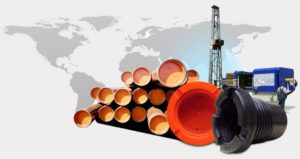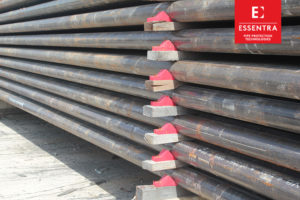Protecting hammer union threads is important to ensure safe and secure connections. Hammer unions are ideal for use in the oil and gas industry but also find applications in other markets. With a threaded male and female connection (or butt-welded for higher operating pressure), they connect flow lines or temporary pipes quickly and easily. Safety during drilling and rigging operations is essential, making the correct utilization of hammer unions a critical production task.
History and Development of Hammer Unions
Hammer unions are rotary-based connections developed in the 1950s. Since then, manufacturers have continued producing the components based on the initial manufacturing standards. These standards include many different types of figures that determine the safe use and joining combinations. In fact, the hammer unions used by oil and gas operations may soon require the American Petroleum Institute (API) standard compliance for safety.
Figure 1502 Hammer Union
The figure number indicates the size and rated pressure of the union. The 1502 figure can withstand operating pressures of up to 15000psi on a two-inch pipe. Male hammer union threads connect to the wing nut (female) subparts. Then, operators hammer securely with a sledgehammer to create the seal. It remains a popular connection type in the drilling industry but does not fall under any specific API standard for size or interoperability.
API is currently conducting research and investigating hammer union standardization due to several safety concerns raised. Incidents where the connections have failed are widely reported, and addressing these issues is now an industry priority.
Protecting Hammer Union Threads
Regular maintenance and proper handling of hammer unions are essential for the protection of the threads. To prevent thread damage, it is important to regularly inspect and clean the threads, removing any debris or rust that may hinder the proper connection. Additionally, applying thread protectors when the hammer unions are not in use can help safeguard the threads from potential damage.
Furthermore, training employees on the correct usage and handling of hammer unions is crucial. Proper training ensures that employees know the potential risks and how to safely connect and disconnect hammer unions. This includes using the correct tools and techniques to tighten the connections, as excessive force can cause thread damage.
In addition to protecting the threads, it is also important to consider the overall integrity of the hammer unions. Regularly inspecting the unions for any signs of wear or damage, such as cracks or leaks, is crucial for identifying and addressing potential issues before they escalate into significant safety hazards.
Companies can ensure safe and secure connections by prioritizing the protection of hammer union threads and implementing proper maintenance and handling procedures. This protects personnel and the environment and contributes to the overall efficiency and productivity of drilling and rigging operations.
API Recommended Procedure
Due to the historical designs of the components, some different figures are mismatched in error during installation. To reduce the risk to staff and environments, API issued a Recommended Procedure (RP) that addresses the incorrect make-up of hammer unions.
Miss-Matched Unions
Companies use different types of hammer unions during operations. While correct matching is critical, they reported numerous incidents where 402, 602, and 1002 wing nut subs had wrong connections to figure 1502 male subs. Unfortunately, this happens as thread profiles are similar, and operators believe a safe connection is in place. However, they are not aware that there’s an actual reduction in safe operating pressure.
API Procedural Safety Procedure
Some of the key recommendations in the API RP include:
- Use only Figure 1502 hammer unions for all operations and replace all other components
- Mark all components clearly with stamping to ensure no faulty connections
- Implement PTW (Permit to Work) and Job Safety Analysis (JSA) for each hammer union connection performed
- Color-code different types of hammer unions
Ensuring Safe Operations during Production
While the above API RP will reduce the chances of incorrect connections, the protection of the hammer union threads remains an important factor for safe operations. Damaged threads can cause failures during high-pressure operations, causing damage to either staff or the environment.
To protect the integrity of your hammer union threads, contact NOV’s Tuboscope MSI Pipe Protection Technologies today. They provide high-quality figure 1502 thread protection equipment that ensures improved safety and reduces production downtime. Call us toll-free at 1-877-276-9208 for immediate assistance.




